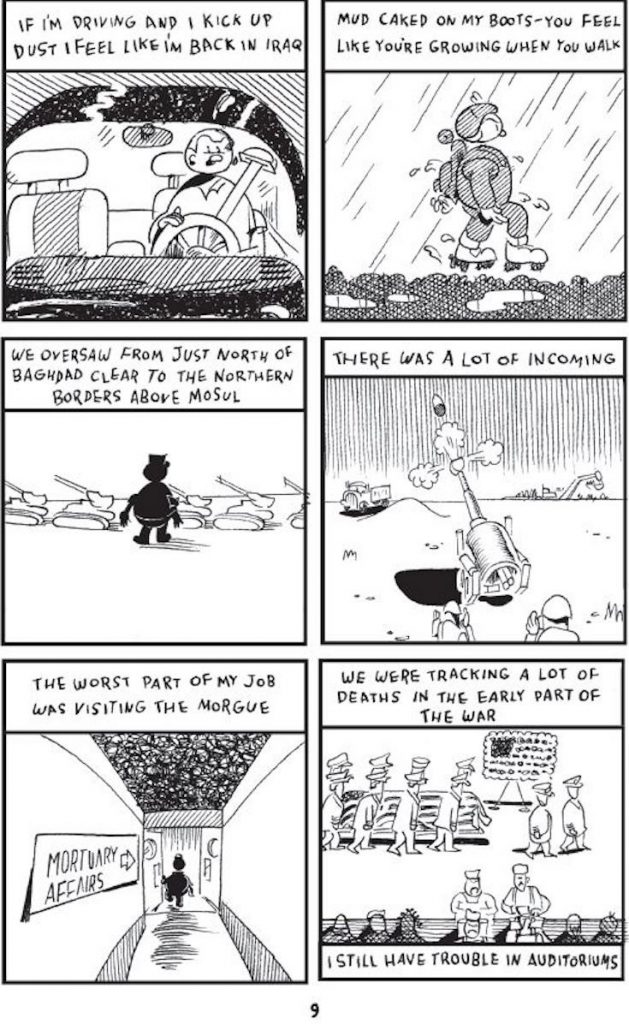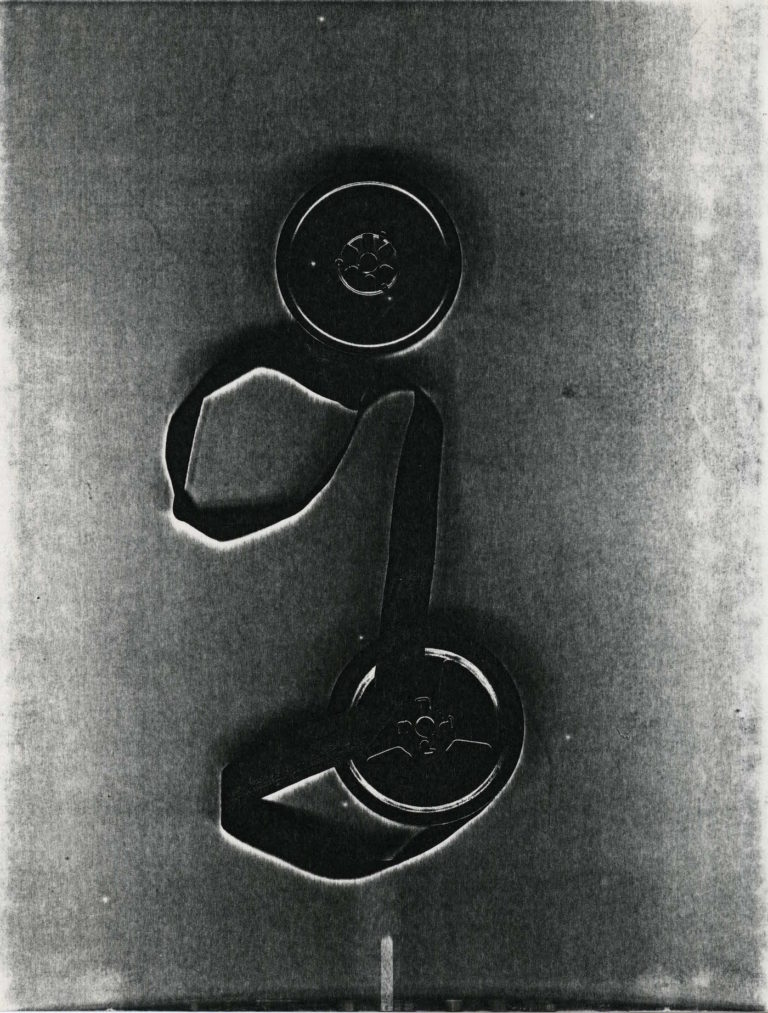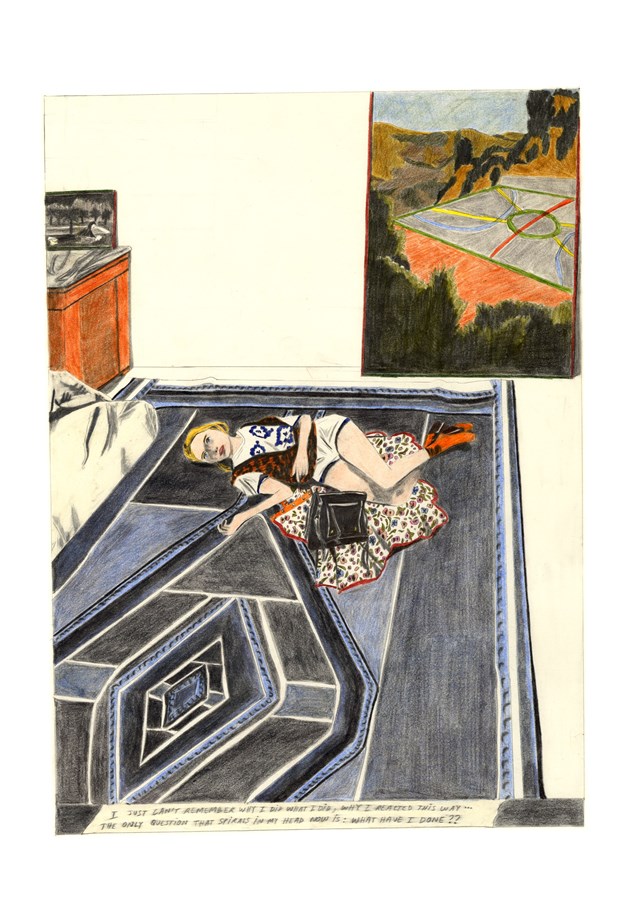Aaron Cockle here today with May Flowers in July; The Return of the Nib; Veterans Comics; Theaster Gates; Copier Art; Marie Jacotey; On Essaying; Rowhouse Auction
—————————————————————————————————
Shannon Wright Comics
CW’s Featured Comic this week, May Flowers, comes from Shannon Wright.
—————————————————————————————————
The Nib is Back
The political cartoon, comics journalism, humor and non-fiction website is back with expanded media coverage. The Nib will be covering the Republican National Convention in Cleveland this week, with correspondence work from Rob Rogers and Sophie Yanow, among others.
—————————————————————————————————
When I Returned
The White River Junction VA Medical Center and The Center for Cartoon Studies collaborated on a project that helped military veterans process their experiences through comics. This work came about through the involvement of James Sturm, cartoonist and co-founder of CCS, and chaplain and cartoonist Kurt F. Shaffert, both who have worked with veterans in the past.
During his time at the VA, Sturm discovered that comics are a powerful medium for working with post-traumatic stress disorder, in particular.
“PTSD is the inability to integrate past and present, which has a devastating effect on the future,” Sturm said. But comics help people literally visualize time, so they can help veterans break down complex histories into manageable chunks.
“Each panel is a discrete unit of time,” he elaborates. “And when you put 8, 9, 10 panels on a page, you’re integrating the past, present, and future into a … whole.”
Comics, Shaffert believes, are the language we need when we talk about war experiences because they’re physical and visual and funny and tragic and profound all at the same time.
“Extraordinary experiences require extraordinary language,” he [Shaffert] said.
“Anybody who’s experienced PTSD has experienced things that are outside of everyday experience. … In order to be able to process events that are traumatic, you need to find … a form of communication that deals with the immature, the impolite, the gross, the grotesque, the obnoxious, the obscene.”
Page above by Jeff Lok. A PDF of the book can be downloaded here.
—————————————————————————————————
How to Build a House Museum
Art Gallery of Toronto opens a show this week of installation work by Chicago-based artist Theaster Gates.
The show is described as:
an immersive exhibition exploring the potential of the house museum—historically important landmarks that have been transformed into legacy sites. Gates proposes new ways of honouring and remembering Black experience and explores the potential of these spaces through music, dance, video, sculpture and painting. Organized as a world of symbolic structures and their associated objects, the exhibition is dedicated to Black luminaries including George Black, Frankie Knuckles and Muddy Waters. How to Build a House Museum invites visitors to tour the house museum in its many possible forms: as an architectural monument, historical representation, or site of freedom.
—————————————————————————————————
Pati Hill: Photocopier
An exhibition of Pati Hill’s copier work was on view at Arcadia University Art Gallery this past April.
Meredith Sellers at Hyperallergic reviewed it:
Stepping into the gallery, I gazed at the show, curated by Richard Torchia, as it presented grids, lines, and vitrines bursting full of Pati Hill’s delicate, remarkable images, all made on the rather unremarkable IBM Copier II. My cynicism was obliterated. I felt a stunning empathy for these images of daily life, laid bare on the cold, smooth glass of a hulking electronic machine, contextualized by snippets of writing that dipped in and out of memory, metaphor, wit, and the kinds of fleeting thoughts one thinks but never utters aloud.
—————————————————————————————————
Obviously I really like fashion and depicting clothing
High fashion and cartooning are rarely spoken of in the same breath, but Marie Jacotey recently collaborated with McQ Alexander McQueen for a new line of handbags by drawing some promotional comics.
—————————————————————————————————
I like to think of the essay as an art form that tracks the evolution of consciousness as it rolls over the folds of a new idea, memory, or emotion.
Essayist John D’Agata has edited a new anthology of work, The Making of the American Essay, the third and final of his “A New History of the Essay” series published by Graywolf Press.
Susan Steinberg interviewed D’Agata about the work, the differences between essay and non-fiction writing, and the concepts of ‘genre’, ‘fact’, and ‘truth’ at Electric Literature:
Steinberg: If memory is unreliable, perspective is subjective, and emotion is unfixed, then what is the function and/or responsibility of “fact” in essays? I ask because I’m curious about your relationship to fact, but I’m also curious about your thoughts on readers’ fixations on the notion of truth. If a misconception about essay writers is that they’re truth-tellers, then do they often run the risk of disappointing the reader? How can essay writers confront or undo what seems to be an impossible-to-fulfill expectation?
D’Agata: Facts are akin to images, for me. That probably strikes some as a perverse statement, but I say it as someone who turns to essays for literary experiences only, and for that reason, when I’m reading I don’t need facts to do much more than resonate with the rest of the story that’s being told.
But that’s not the case with every reader, of course. We’re all looking for different things and have different expectations when we read. Yet for that very reason we do a disservice to both the essay and its readership by suggesting that everything that falls beneath the umbrella of “nonfiction” ought to be written by the same rules and for the same audience. There are some nonfiction books that traffic primarily in facts, by which I mean that we value them for the facts and information that they introduce to us and the ways in which they organize them. And those books are great. I’m a rabid reader of history and science, for instance, and I turn to those genres because I want the information that their dustjackets proffer: A Story about X and How It Changed the World. And while I appreciate those books being well written and am always down for great storytelling, I’m not necessarily expecting that from those books or looking for that when I read them. When I read a memoir, on the other hand, I’m hoping to bear witness to an exhilaratingly expressive voice and am therefore expecting a completely different literary experience. I don’t care about the facts in that case; I care about the story.
—————————————————————————————————
Rowhouse Auction for July 17-24
New private auction items up at auction.comicsworkbook.com. Email Frank Santoro at santoroschoolATgmail for a password, if you don’t already have one. If you already have a password, it is the same from last week. All funds go to helping keep the lights on and further developing the school.





